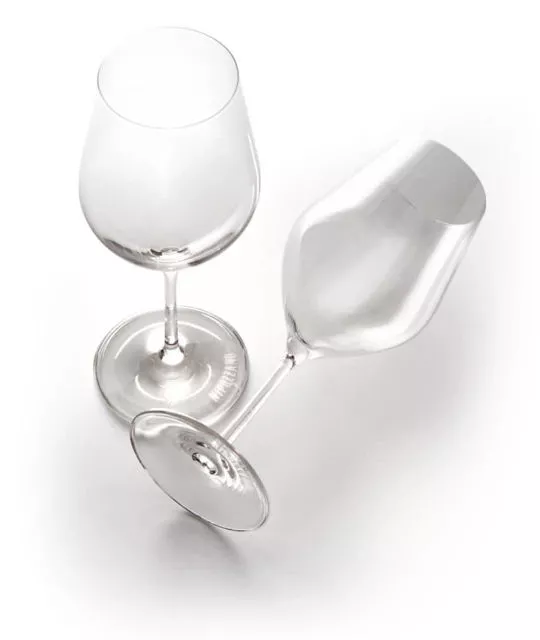
Types of wine glasses
In ancient times, wines were consumed in vessels that were concave by nature, such as shells or hollowed stones; later, animal horns were used, and thereafter cups were made of pottery or hollowed out of wood. In ancient Rome, for example, they were sometimes made of silver or pewter and, in some cases, gold. Subsequently, they were replaced by glass cups, often decorated. Venice, particularly Murano, is credited as early as the 1400s with producing high-quality glassware. Venetian glasses quickly became synonymous with refinement and value, with the production of wider cups and longer stems, often embellished with carvings and decorations. Only in recent decades has there been a move toward totally transparent glasses, without embellishment and generally wider. Learn with this guide the tips to follow when selecting wine glasses.
Which glass should be used for which wine
Fine, colourless and transparent crystal wine glasses are the ones that allow us to best appreciate all the nuances of wine. A wine glass consists of 3 parts: bowl, stem, and base. To fully enjoy all the characteristics of each wine, it is advantageous to choose glasses made precisely to highlight the peculiarities of that specific wine. This is why the shape of the glass is so important and decisive in appreciating the visual, olfactory, and gustatory aspects of wine.
The choice should be made by following some basic rules:
1. Use colourless and transparent glasses of fine crystal; alternatively, according to the dictates of more recent research, avoid glasses with silk-screen prints and ornaments to appreciate all the qualities of the wine.
2. Do not warm the wine by touching the wine glass; always try to hold it by the stem.
3. The wine glass must be spotlessly clean and odorless. After washing it thoroughly, the glass should not "smell" or give off aromas of perfumed detergents that have been used, and especially not have unpleasant odors due to improper washing.
Red and white wine glasses: How to recognize the right one
It can be argued that white wine glasses are more closed. This allows the aromas to be concentrated and compensate for the generally lower serving temperature. On the other hand, full-bodied red wines are usually served in open glasses at a higher temperature to benefit from better oxygenation. A wide glass is more likely to enhance the wine even if a slightly less olfactory intensity is perceived.
To taste the best Italian wines optimally, you must pay attention to three aspects related to the shape of the glass:
-
The thinness of the mouthpiece.
-
The width of the various parts.
-
The height of the glass.
In addition, the shape of the drinker determines both the amount of wine that enters the mouth and the area of the mouth/tongue, more or less wide, covered by the liquid.
Discover the Tuscan diversity expressed by our estates, where you will also find outstanding red wines such as an elegant Montesodi or a Nipozzano Riserva, two Chianti Rufina Riserva DOCGs. In addition, you will find white wines of all kinds, such as Pomino, a white DOC wine of great elegance and finesse. An expression of the Tuscan hinterland and mountains, whose vineyards are over 700 metres above sea level. Alternatively, our Masso Vivo, a Toscana Vermentino IGT with floral and fruity notes, is an authentic Mediterranean expression of Tuscany!
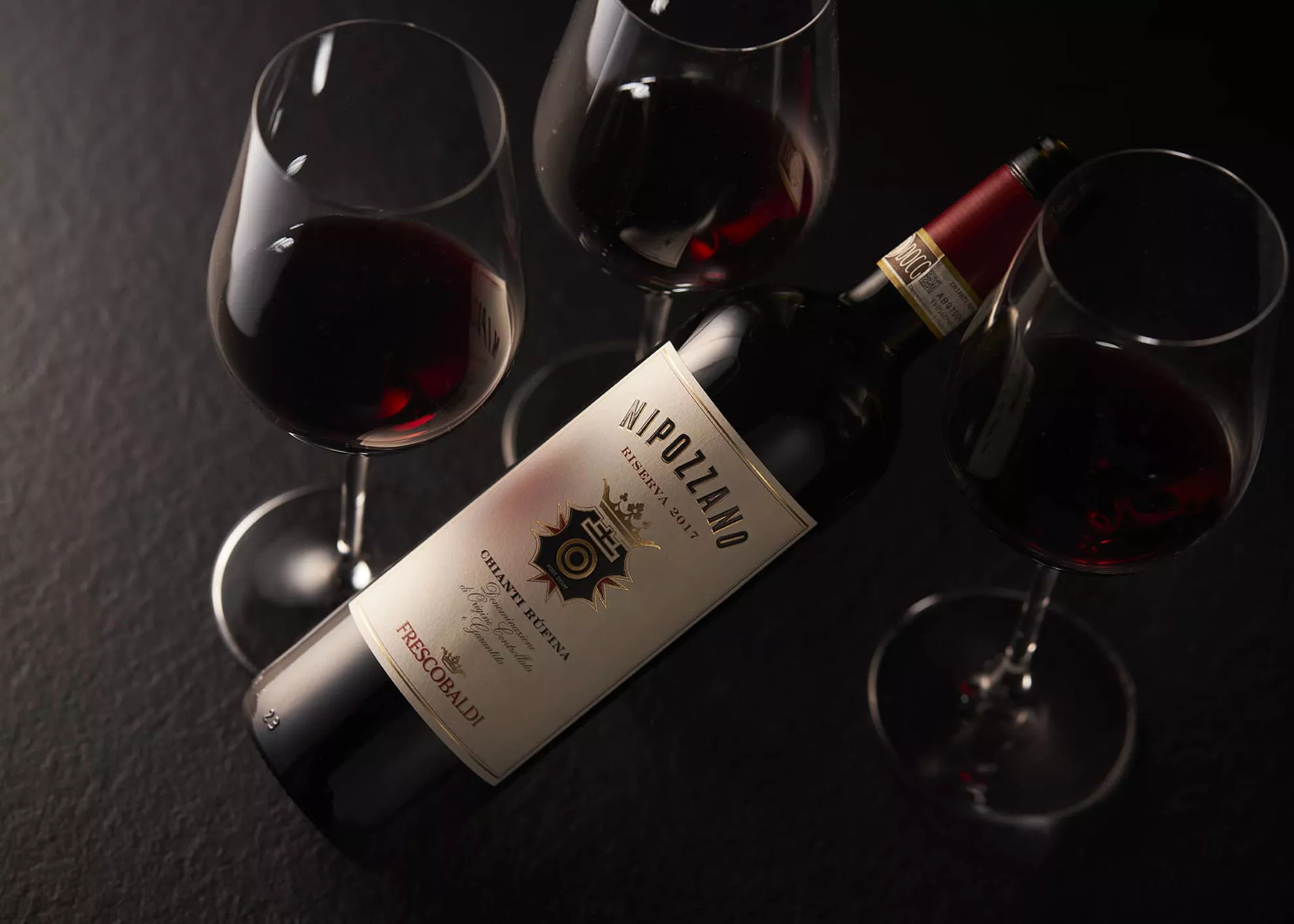
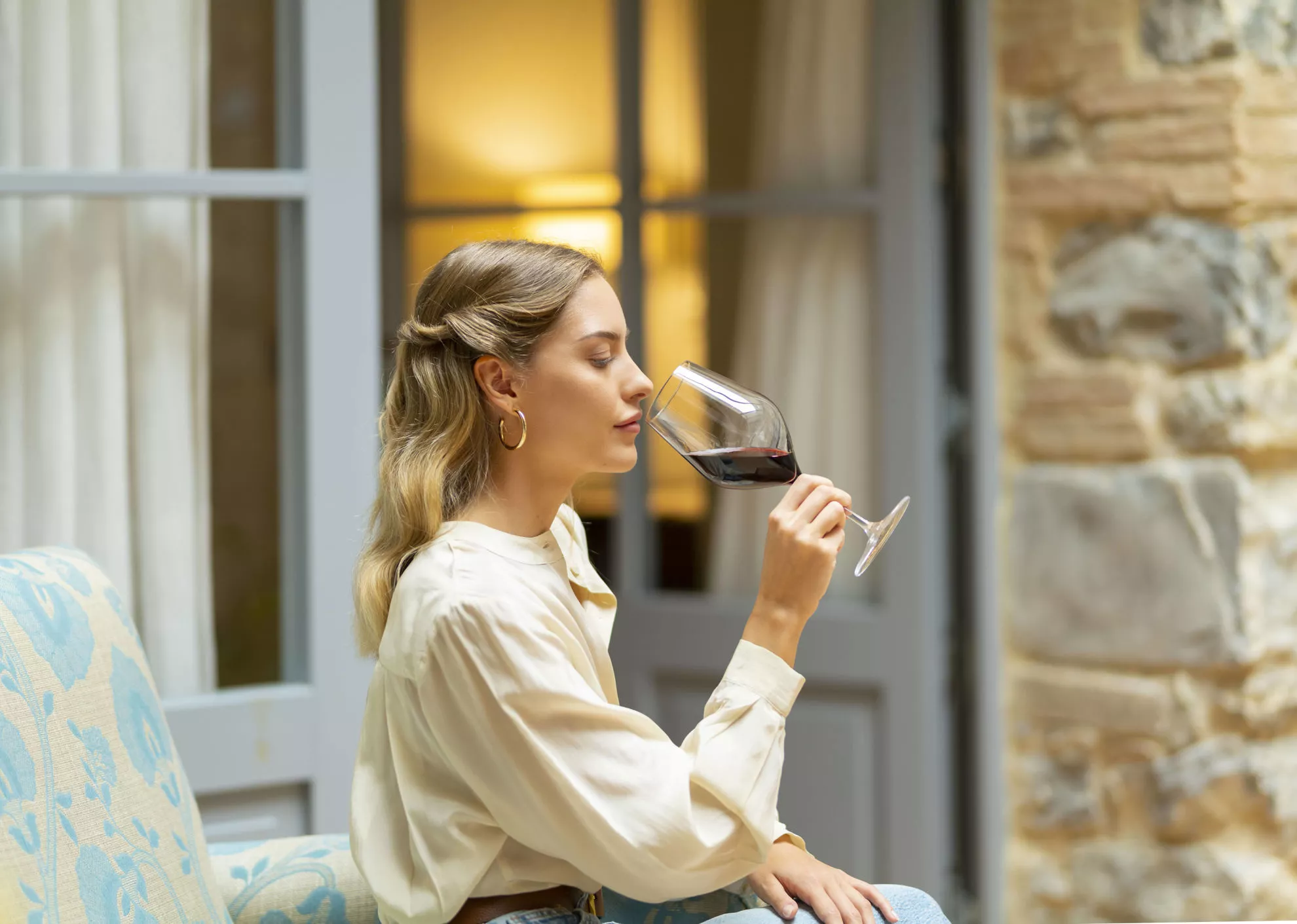
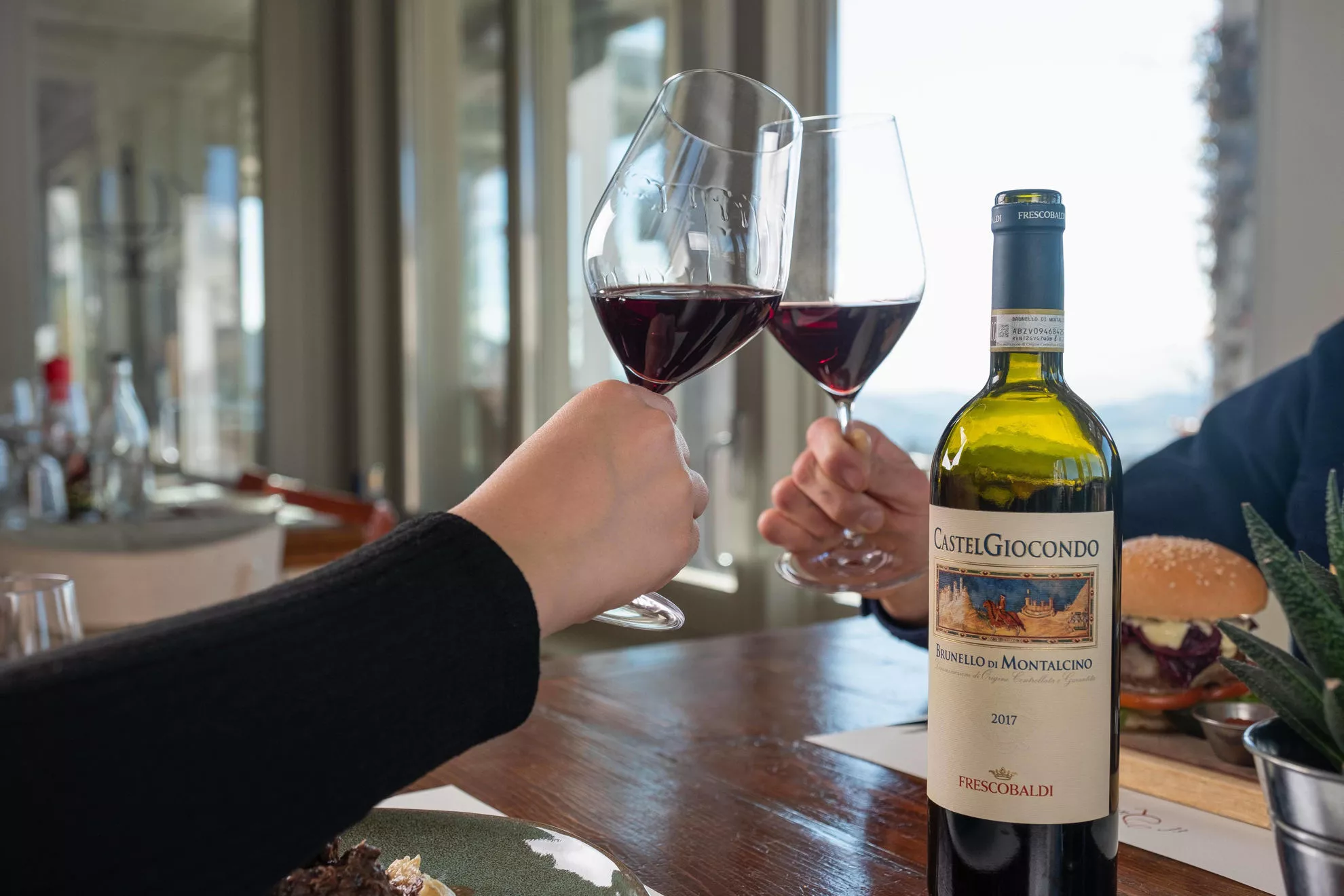
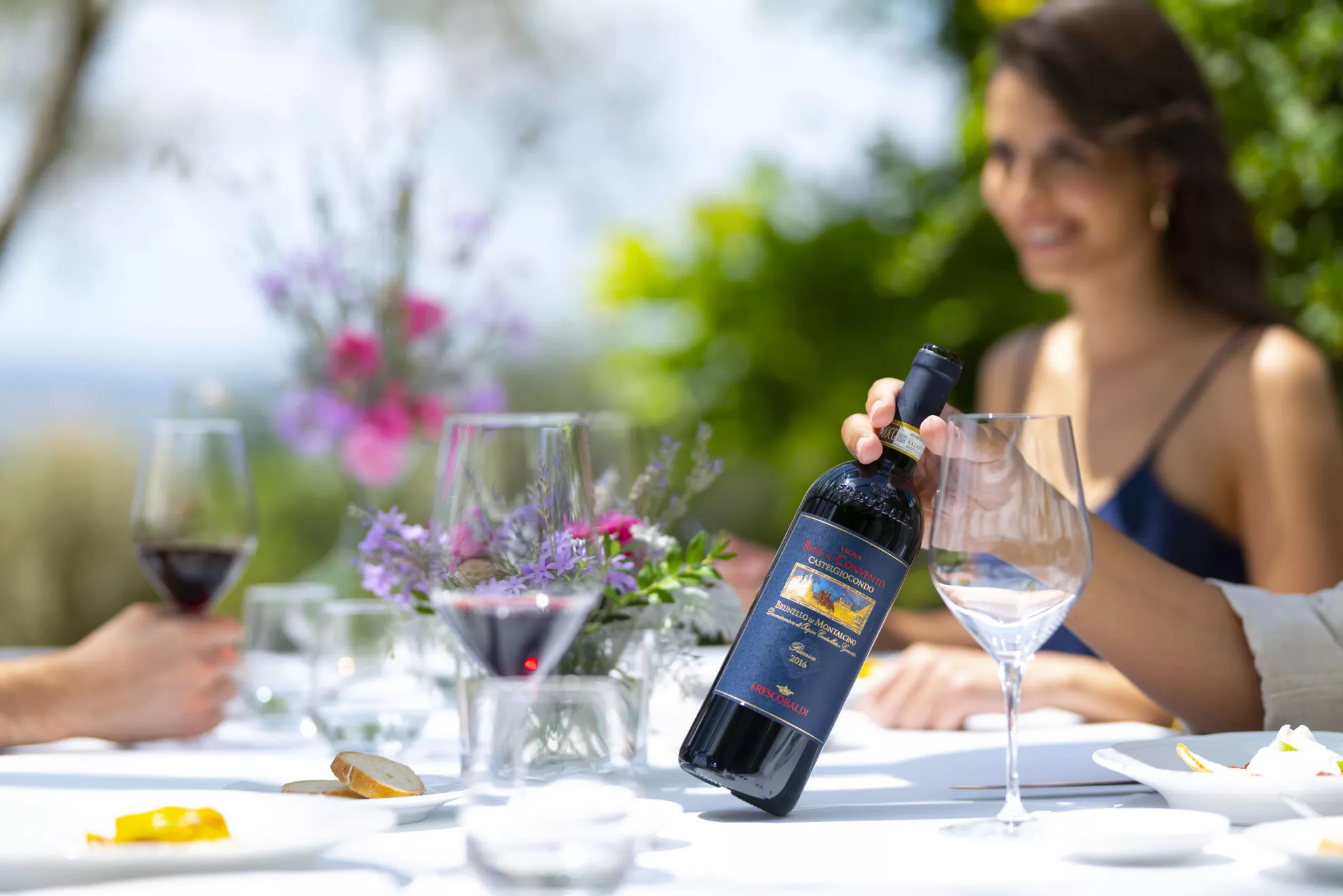

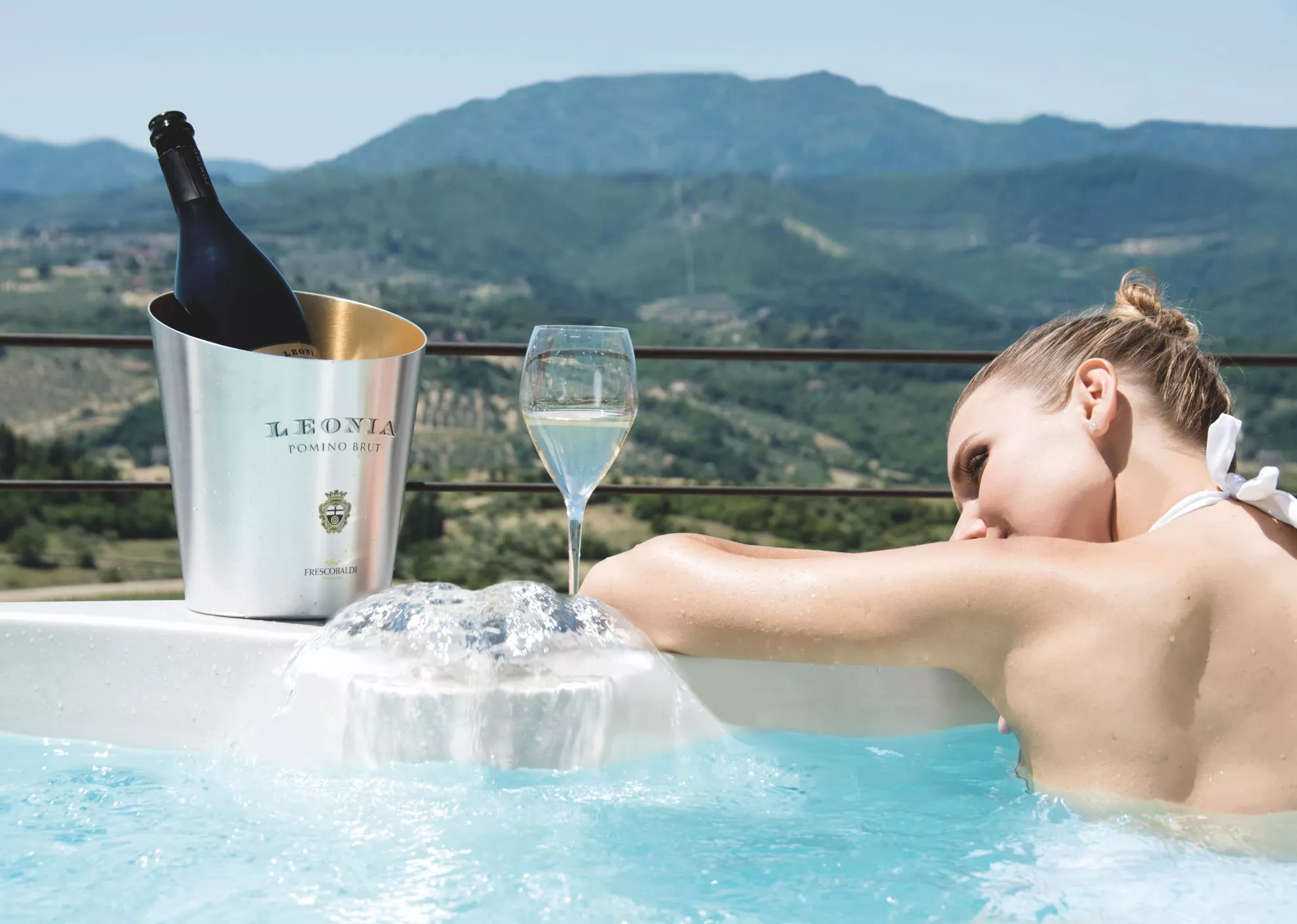
What are sparkling wine glasses?
Long, narrow, flute-shaped glasses were generally preferred for sparkling wines. The shape of the flûte is designed to generate bubbles because of its very narrow, almost punctiform base; in addition, the narrow base allows for few points from which chains of bubbles arise, thus reducing the surface area and the possibility of the gaseous effect disappearing. Today there is a tendency to give more space to aromas, and wide glasses are often adopted similarly to still wines.
What side of the table do wine glasses go on
When planning a dinner, lunch, or special occasion, the way we place the wine and water glasses at the table, as well as the cutlery, is part of an essential and very precise protocol.
Although it is a precise protocol, it does not mean it is complicated; on the contrary, it is very logical. Glasses are placed in the order indicated by the plates on multi-course menus. This means that habitually the water glass should be set to the right above the cutlery, to the left of which we find a white wine glass and next to it a red wine glass.
info@frescobaldi.it |+39 055/27141